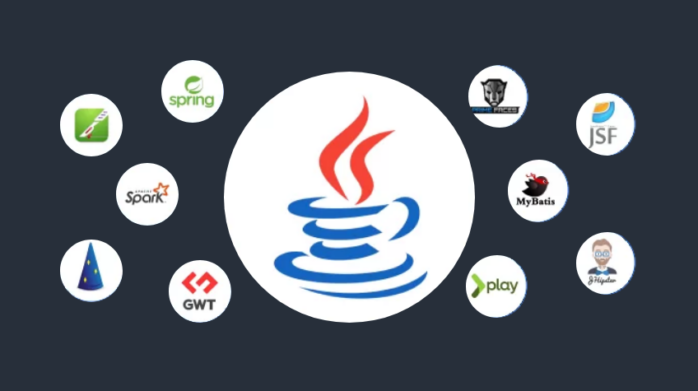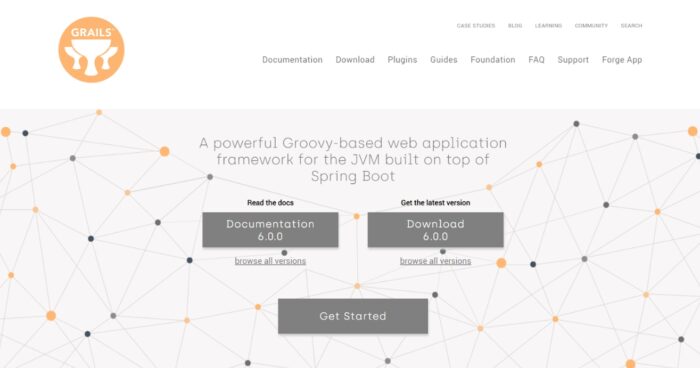Sananga is a traditional medicinal eye drop, derived from the roots of the Tabernaemontana undulata or sananho shrub, native to the Amazon rainforest. This plant-based remedy has been used by indigenous tribes for centuries, believed to offer both physical and spiritual healing. Sananga is now gaining popularity worldwide due to its purported benefits, which include improved vision, detoxification, and spiritual insights. This guide provides an in-depth look at Sananga, exploring its origins, preparation, application, benefits, potential risks, and the integration of its use into modern wellness practices.
Origins and Cultural Significance
The roots of Sananga lie deep within the Amazonian tribal traditions, where it has been used by shamans and healers for generations. In these communities, it’s not just a physical treatment but a spiritual sacrament, believed to cleanse not only the eyes but the spirit as well. The preparation and application of Sananga are often accompanied by rituals and prayers, emphasizing its significance beyond mere physical healing.

Preparation of Sananga
To prepare Sananga, the roots of the Tabernaemontana plant are first harvested, then thoroughly cleaned and finely shaved into small pieces. These shavings are mixed with clean water. The Sananga is extracted by pressing this mixture through a mesh bag, resulting in a bright yellow liquid that forms the eye drops. Alternatively, Sananga roots can be dried, ground into a powder, and stored for future use. When required, this powder is mixed with water to create the eyedrops. However, this method tends to yield a weaker solution that is less complex compared to the preparation using fresh roots.
Application Process
The application of Sananga can be quite intense and should be approached with caution. Traditionally, it’s administered by a shaman or an experienced individual. The person receiving Sananga is usually seated or lying down. The drops are then carefully applied into each eye. The experience can be painful, causing a burning sensation that can last for several minutes. This discomfort is often interpreted as part of the cleansing process, releasing emotional, physical, and spiritual blockages.
Perceived Benefits
The use of Sananga is associated with various benefits. Traditionally, it’s believed to improve vision, both physically and metaphorically, enhancing one’s ability to see the world clearly. It’s also said to aid in the treatment of physical eye conditions like glaucoma, cataracts, and myopia. Beyond ocular health, Sananga is used to cleanse the body of toxins, improve mental clarity, and foster deep spiritual insights.

Potential Risks and Considerations
While Sananga is natural, it is not without risks. The intense burning sensation it causes can be overwhelming for some users, and there is a potential for adverse reactions, particularly in individuals with sensitive eyes or pre-existing eye conditions. It is crucial to obtain Sananga from reputable sources to ensure it has been prepared correctly and safely. Beginning with a weaker concentration of Sananga and gradually working up to a stronger one is also advisable. Additionally, consulting a healthcare professional before using Sananga is recommended, especially for those with existing health concerns.
Integration into Modern Wellness Practices
In contemporary wellness circles, Sananga is being embraced as part of a holistic approach to health. It’s often used in conjunction with other Amazonian medicines like Ayahuasca, as well as meditation and yoga practices. This integration reflects a growing interest in indigenous healing traditions, recognizing the value of these ancient practices in modern life.
Navigating the Ethical Implications
The increasing popularity of Sananga in the global wellness community brings forth ethical considerations. It’s essential to acknowledge and respect the cultural heritage of Sananga, understanding its sacred place in Amazonian traditions. Ethical sourcing is crucial, ensuring that the demand for Sananga does not negatively impact the environment or the indigenous communities. It’s also important to approach its use with cultural sensitivity, respecting the spiritual aspects that are integral to its traditional application.

Guidelines for First-Time Users
For those new to Sananga, it is recommended to start with a guided session, ideally under the supervision of a practitioner familiar with Amazonian healing practices or someone with experience in its use. The initial doses should be minimal or weaker, gradually increasing to stronger concentrations as one becomes accustomed to the sensation and effects. It’s also important to use Sananga in a calm and supportive environment, as the experience can be both intense and introspective.
Understanding the Spiritual Aspect
In indigenous cultures, Sananga is more than a physical treatment; it’s a spiritual tool. It’s believed to open the inner vision, allowing deeper insight into one’s life and challenges. The use of Sananga in a spiritual context often involves setting intentions, meditation, and sometimes accompanying rituals. This aspect can be an integral part of the healing process and is often what sets Sananga apart from conventional eye treatments.
Combining Sananga with Other Practices
Sananga can be combined with various holistic practices to enhance its benefits. For instance, it’s often used in conjunction with Ayahuasca ceremonies to deepen the spiritual experience. Yoga and meditation can also complement the use of Sananga, aiding in grounding and integrating the experience. It’s important, however, to approach such combinations with an understanding of how these practices interact and under the guidance of knowledgeable practitioners.

Aftercare and Integration
After using Sananga, taking time for rest and reflection is important. The experience can be intense, and the body and mind may need time to process and integrate the experience. Some users report heightened emotional sensitivity or increased clarity of thought post-application. Engaging in activities like journaling, gentle yoga, or meditation can be beneficial in integrating the experience.
Moving Forward with Respect and Understanding
As Sananga makes its way into more diverse health and wellness circles, it’s imperative to continue approaching it with respect and understanding. This involves acknowledging its roots, being mindful of its cultural significance, and using it in a way that honors its origins. By doing so, individuals can harness the benefits of Sananga while contributing to the preservation and appreciation of indigenous wisdom and practices.
Conclusion
Sananga, with its deep roots in Amazonian healing traditions, offers a unique blend of physical and spiritual healing. Its application and effects, while intense, can lead to profound insights and benefits. As with any traditional medicine, it’s important to approach Sananga with respect, caution, and an open mind. Whether used for physical healing, spiritual growth, or as part of a broader wellness practice, Sananga presents an opportunity to connect with an ancient healing tradition and explore new dimensions of health and well-being.



































 Summer/Monsoon season (July/August through Mid-September):
Summer/Monsoon season (July/August through Mid-September): Autumn Season (End of September/October/November):
Autumn Season (End of September/October/November): Can we trek to ABC during Winter Season (December/January/February):
Can we trek to ABC during Winter Season (December/January/February):










Sarah Silverman – Biography and Fun Facts
Sarah Silverman is a well-known comedy actress and writer. She has performed in various shows and movies, showcasing her talent.
You can go to this website to see some of her stunning pictures. She is modest, hot, and sexy which makes her ideal for any type of role.
She is famous for her commentary on different social issues and taboos. She is against the discrimination of gender, race, and religion. And, she has vocalized her thoughts repeatedly in various ways.
In this article, we are going to discuss a brief biography of her.
General Information about Actress
She was born on December 1, 1970. So, currently, her age is 52. Her zodiac sign is Sagittarius.
Her height is 5.6 feet, and her net worth is almost 8 million.
She is a female activist that’s why she is popular and loved by a large audience. She is active on different social media platforms such as Facebook, Instagram, Twitter, and YouTube.
Early Life
She was born in Bedford, New Hampshire in 1970. Her father’s name was Donald Silverman who had a cloth business.
Her mother was Beth Ann who was a theater director and photographer. She had three older sisters.
Her father always encouraged her to use vulgarity for his entertainment. While, her mother led her to think critically, and instilled the seed of curiosity in her. These traits made her bold and a successful actress and female activist.
Soon, her parents divorced and they all moved to Manchester for some time. From an early age, she suffered from depression. Due to this, she had a bet-wetting issue which remained till adolescence.
Education
From her school life, she was interested in stand-up comedy. So, she performed in various neighborhood and school shows as a comedian.
She did her early schooling in Boston. At that time, she also tried stand-up comedy in Boston Club.
She graduated from Derryfield School in 1988. It was a college preparatory school present in Manchester.
Afterward, she went to the University of New York to study theater. There, she started performing in New York comedy clubs.
After one year in the university, encouraged by her father, she dropped out. Because she wanted to make stand-up comedy as her full-time job.
So, she has not graduated from the university.
Career
As we have already told you, Silverman started her career in school and college life. After she dropped out of the university, Saturday Night Live recruited her as a writer and comedian.
But, she was dropped after one season because none of her sketches was approved and aired. It is the incident of 1993.
This thing didn’t stop her as she appeared in the sketch comedy show in 1995. That show’s name was “Mr. Show with Bob and David”.
After only two years, in 1997, she landed a leading role in the movie “Who’s the Caboose?”.
After that, in 2005, she did a documentary movie The Aristocrats. In that, her role was of a child sex worker. But, her role in this movie became controversial, and she was criticized for it.
In the same year, she appeared in her debut stand-up television show. That show was “Sarah Silverman: Jesus is Magic”. Her role and dialogues again became controversial in this one-woman act. But, she came into the limelight due to it.
In 2007, she launched her show. That show’s name was “The Sarah Silverman Program”. It ran until 2010 on “Comedy Central”.
In 2010, she released her memoir which has comic elements into it. The book’s name was “The Bedwetter: Stories of Courage, Redemption, and Pee”.
These are some main highlights of Sarah Silverman’s career.
Awards
She earned her first Emmy Award in 2008 for a short comedy show that was present on “Jimmy Kimmel Live”. It was a music show.
Her second Emmy award was for writing “Sarah Silverman: We Are Miracles”.
In 2018, her name was on the Walk of Fame. Except for these, she also has won a lot of nominations for various awards.
5 Fun Facts about Sarah Silverman
Conclusion
The exploration of Sarah Silverman’s biography and fun facts provides a vivid portrait of a comedian, actress, and writer whose career is marked by wit, audacity, and an unwavering commitment to pushing boundaries in the world of comedy.
From her early days honing her craft in stand-up to her groundbreaking work in television, Silverman has become a trailblazer known for her fearless humor and unapologetic approach to tackling societal taboos.
The overview sheds light on the nuances of Silverman’s personal and professional journey, including her upbringing, comedic influences, and the evolution of her distinctive comedic style.
It becomes evident that her success is rooted in a combination of sharp intellect, resilience, and an ability to fearlessly navigate controversial topics with humor and insight.
Her willingness to delve into taboo topics not only distinguishes her as a groundbreaking comedian but also positions her as a social commentator using laughter as a powerful tool for dismantling preconceptions.
Moreover, the inclusion of intriguing fun facts adds a delightful layer to the exploration of Sarah Silverman.
Whether it’s her hidden talents, unexpected connections to other notable figures, or her philanthropic endeavors, these details offer a more well-rounded understanding of the person behind the comedic persona.
As readers traverse through the biography and fun facts about Sarah Silverman, they gain insight into a comedian who not only makes audiences laugh but also challenges societal norms and sparks important conversations.
In essence, Sarah Silverman’s story is one of laughter, intellect, and an enduring dedication to using comedy as a powerful tool for reflection and social commentary.
Have you seen any of her shows?